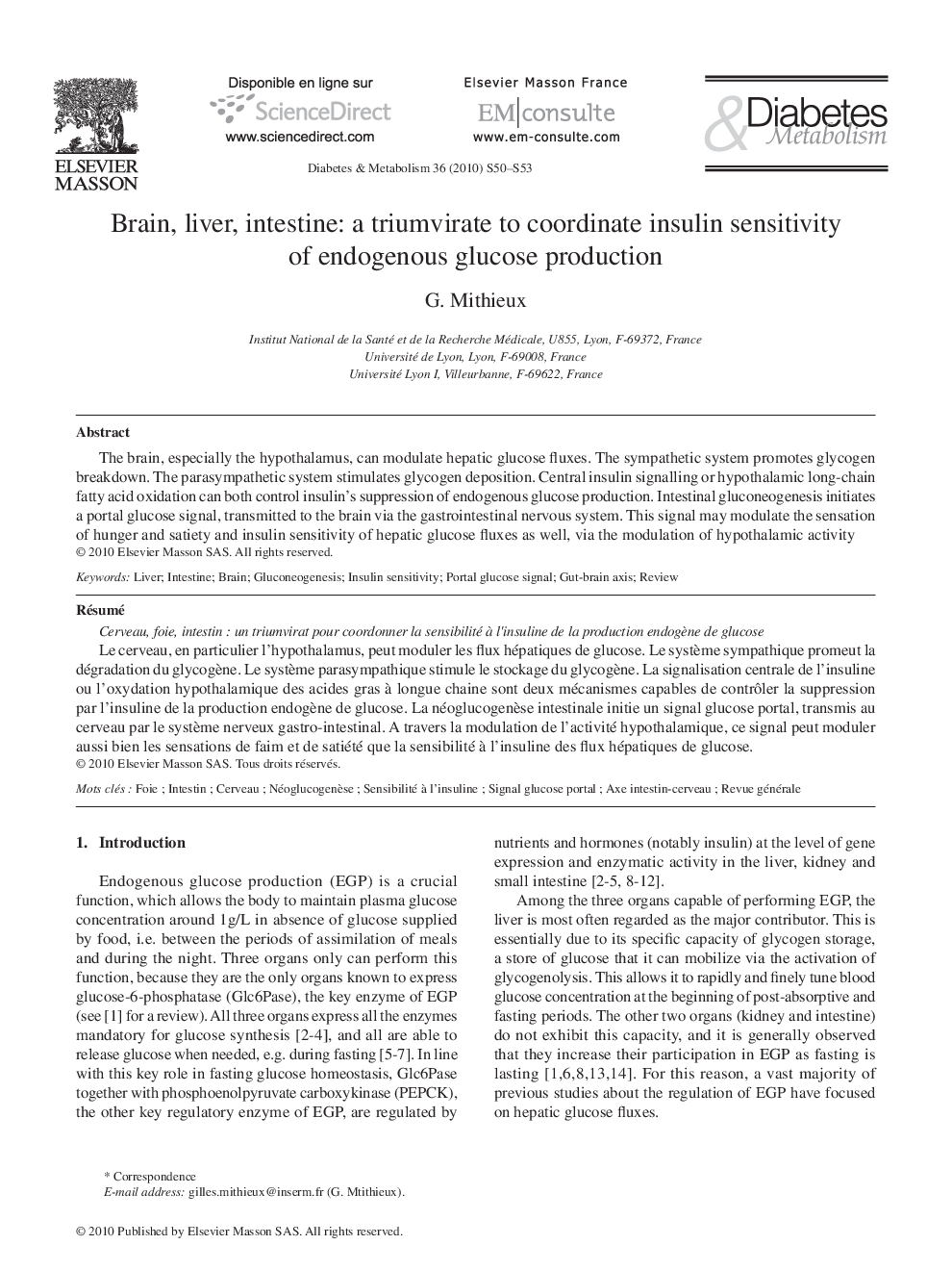| Article ID | Journal | Published Year | Pages | File Type |
|---|---|---|---|---|
| 3259951 | Diabetes & Metabolism | 2010 | 4 Pages |
The brain, especially the hypothalamus, can modulate hepatic glucose fluxes. The sympathetic system promotes glycogen breakdown. The parasympathetic system stimulates glycogen deposition. Central insulin signalling or hypothalamic long-chain fatty acid oxidation can both control insulin's suppression of endogenous glucose production. Intestinal gluconeogenesis initiates a portal glucose signal, transmitted to the brain via the gastrointestinal nervous system. This signal may modulate the sensation of hunger and satiety and insulin sensitivity of hepatic glucose fluxes as well, via the modulation of hypothalamic activity
RésuméLe cerveau, en particulier l’hypothalamus, peut moduler les flux hépatiques de glucose. Le système sympathique promeut la dégradation du glycogène. Le système parasympathique stimule le stockage du glycogène. La signalisation centrale de l’insuline ou l’oxydation hypothalamique des acides gras à longue chaine sont deux mécanismes capables de contrôler la suppression par l’insuline de la production endogène de glucose. La néoglucogenèse intestinale initie un signal glucose portal, transmis au cerveau par le système nerveux gastro-intestinal. A travers la modulation de l’activité hypothalamique, ce signal peut moduler aussi bien les sensations de faim et de satiété que la sensibilité à l’insuline des flux hépatiques de glucose.
